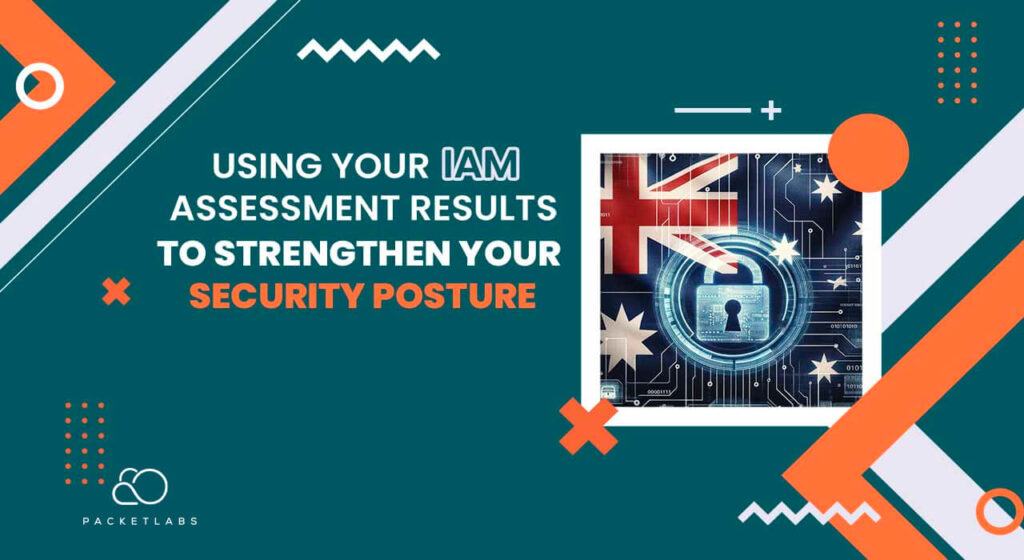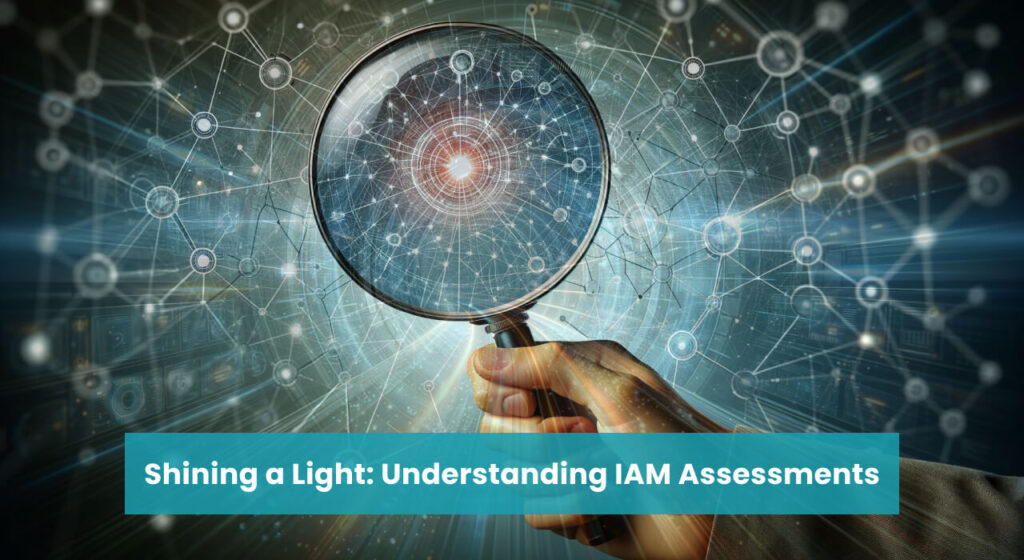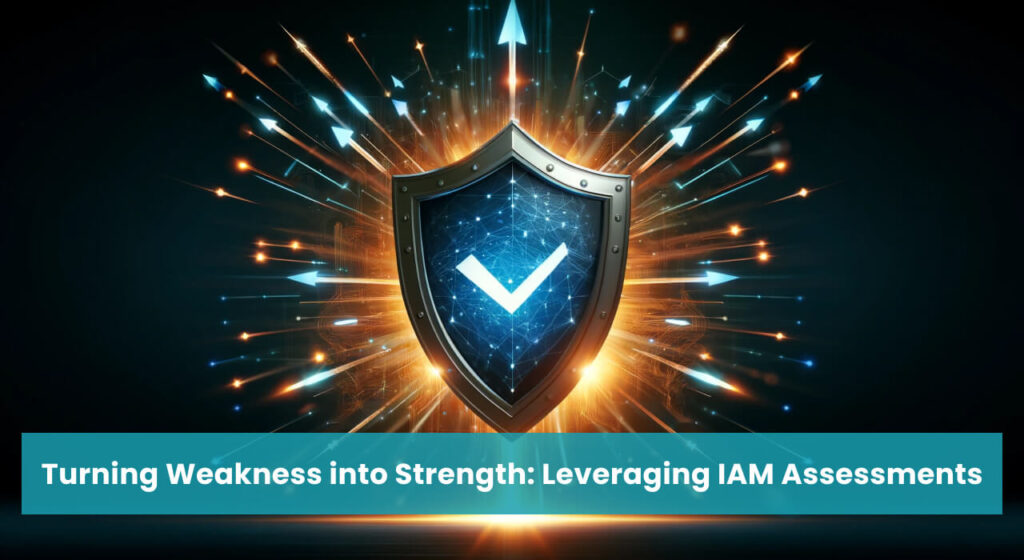
The interconnected nature of modern business exposes Australian organisations to a growing landscape of cyber threats. In 2022 alone, Australian businesses reported a staggering $33 billion in cybercrime losses, highlighting the urgent need for robust security measures. Identity and Access Management (IAM) stands as a critical line of defence, ensuring only authorised individuals can access sensitive data and systems. As outlined by the Australian Cyber Security Centre (ACSC), a well-implemented IAM system underpins information security by governing access privileges and user identities.
However, cybersecurity is not a static endeavour. Continuous improvement is paramount, requiring organisations to proactively assess and refine their IAM practices. By employing a cyclical approach of evaluation, identification of vulnerabilities, and implementation of corrective measures, organisations can build a more resilient security posture. This article delves into the significance of IAM for Australian organisations, explores the principles of continuous improvement in cybersecurity, and demonstrates how leveraging IAM assessment results fosters a stronger overall security stance. We will explore practical guidance on conducting IAM assessments, identifying vulnerabilities, and implementing corrective measures to fortify your organisation’s digital defences.
Understanding IAM Assessments

Evaluating the effectiveness of your IAM program is crucial for maintaining a robust security posture. IAM assessments provide a comprehensive analysis of your organisation’s identity and access controls, pinpointing strengths and weaknesses. These assessments can be categorised into three primary types:
- Internal Assessments: Conducted by your in-house security team, internal assessments offer a cost-effective approach to gauge the overall health of your IAM program. However, inherent biases and blind spots can limit their effectiveness.
- External Assessments: Performed by independent security specialists, external assessments provide an objective evaluation, uncovering potential vulnerabilities that internal teams might miss. While offering a more thorough analysis, external assessments can incur higher costs.
- Self-Assessments: These assessments empower organisations to take ownership of their security posture. Using pre-defined frameworks and checklists, organisations can systematically evaluate their IAM practices against established best practices. While valuable for raising awareness, self-assessments may lack the depth and expertise offered by external evaluations.
A comprehensive IAM assessment delves into several key areas:
- User Access Privileges: This scrutinises the assignment and management of access rights. The assessment examines whether access is granted based on the principle of least privilege, ensuring users only have the minimum permissions required to perform their duties.
- Password Management: The strength and lifecycle of user passwords are critical considerations. The assessment evaluates password complexity requirements, multi-factor authentication protocols, and password rotation policies.
- Access Controls: This examines the mechanisms used to regulate access to data and systems. The assessment evaluates firewalls, intrusion detection systems, and role-based access controls (RBAC) to ensure only authorised users can access specific resources.
Australian regulations and standards, such as the Australian Privacy Principles (APPs) established by the Office of the Australian Information Commissioner (OAIC), play a vital role in IAM assessments. The APPs mandate organisations to implement appropriate technical and organisational controls to safeguard personal information Australian Privacy Principles (APPs), Office of the Australian Information Commissioner: https://www.oaic.gov.au/privacy/australian-privacy-principles. An IAM assessment ensures compliance with these regulations by verifying that access controls are aligned with data classification and user roles. By incorporating these elements, IAM assessments create a holistic picture of your organisation’s security posture, paving the way for targeted improvements.
Leveraging IAM Assessment Results

Once an IAM assessment is complete, the true value lies in effectively leveraging its findings to fortify your organisation’s security posture. Analysing the results requires a systematic approach to pinpoint security gaps and vulnerabilities. Here’s a breakdown:
- Review Findings: Meticulously examine the assessment report, identifying areas where controls are deemed inadequate or non-existent. Look for discrepancies between documented policies and actual practices.
- Prioritize Issues: Not all vulnerabilities carry the same weight. Classify the identified issues based on severity (high, medium, low) and potential impact (data breach, reputational damage, financial loss). A risk matrix can prove to be an invaluable asset in this process.
- Remediation Planning: Develop a comprehensive remediation plan to address the prioritized vulnerabilities. This plan should outline specific actions, timelines, and resource allocation for implementing corrective measures.
Australian Context: Let’s explore how IAM assessment findings can translate into actionable improvements for Australian organisations:
- Excessive User Privileges: The assessment might reveal instances of users holding excessive access rights beyond their job requirements. This can be rectified by adhering to the principle of least privilege and implementing granular access controls based on user roles and responsibilities.
- Weak Password Management: Findings may highlight inadequate password complexity requirements or a lack of multi-factor authentication protocols. Mitigating actions include enforcing stronger password complexity through minimum character length and character type variations, and mandating multi-factor authentication for all user accounts. This aligns with best practices outlined by the Australian Cyber Security Centre (ACSC) to bolster password security.
- Inconsistent Access Reviews: The assessment could expose a lack of regular reviews for user access privileges. Implementing a defined cadence for access reviews ensures that user access remains aligned with ongoing job roles and prevents unauthorised access over time. This aligns with the Australian Privacy Principles (APPs) that mandate organisations take reasonable steps to ensure the accuracy of personal information they hold.
| Vulnerability | Description | Remediation Strategy |
|---|---|---|
| Excessive User Privileges | Users have access to data and systems beyond their job requirements. | Implement the principle of least privilege. Enforce role-based access controls (RBAC). |
| Weak Password Management | Inadequate password complexity requirements or lack of multi-factor authentication. | Enforce stronger password complexity policies. Mandate multi-factor authentication for all user accounts. |
| Inconsistent Access Reviews | User access privileges are not reviewed regularly. | Implement a defined cadence for access reviews (e.g., quarterly, annually). |
| Stale or Inactive User Accounts | User accounts remain active even when employees have left the organisation or changed roles. | Deactivate or delete stale or inactive user accounts promptly. |
| Unsanctioned Software Use | Unapproved software applications are being used within the organisation. | Implement a process for software approval and deployment. Monitor for unauthorised software installations. |
By meticulously analysing IAM assessment results and implementing targeted remediation strategies, Australian organisations can significantly strengthen their security posture. This proactive approach demonstrates compliance with relevant regulations and safeguards sensitive data, fostering trust with stakeholders and customers.
Building a Culture of Continuous Improvement

A successful IAM program thrives on a culture of continuous improvement. This fosters a proactive environment where security is not a one-time fix but an ongoing journey. Here’s why this approach is crucial:
- Evolving Threat Landscape: Cyber threats are constantly evolving, requiring organisations to adapt their IAM practices accordingly. A continuous improvement mindset ensures your defences remain effective against emerging threats.
- Shifting Security Needs: Business processes and data usage can undergo significant transformations over time. A culture of continuous improvement allows IAM practices to adapt and scale alongside these changes, ensuring ongoing security.
- Employee Awareness: Human error remains a significant security risk. Continuous education empowers employees to identify and report suspicious activity, strengthening the overall security posture.
Strategies to cultivate this culture include:
- Regular Security Awareness Training: Train employees on IAM best practices, including password hygiene, phishing email identification, and the importance of reporting suspicious activity. Update training content to reflect the latest cyber threats.
- Open Communication Channels: Encourage a culture of open communication where employees feel comfortable raising security concerns. This allows for swift identification and remediation of potential vulnerabilities.
- Metrics and Reporting: Regularly monitor key IAM metrics, such as user access attempts and privileged access usage. These insights inform decision-making and identify areas requiring improvement.
providing a periodic evaluation of your security posture, assessments identify new vulnerabilities and areas for enhancement.
Furthermore, incorporating threat intelligence can significantly bolster your continuous improvement efforts. The Australian Cyber Security Centre (ACSC) provides valuable resources on threat intelligence [https://www.asd.gov.au/about/what-we-do/cyber-security], empowering organisations to stay informed about the latest cyber threats and adjust their IAM practices accordingly. By fostering a culture of continuous improvement, Australian organisations can build a robust and adaptable security posture, effectively safeguarding their valuable data assets in the ever-changing digital landscape.
Effective Identity and Access Management (IAM) is the cornerstone of robust cybersecurity for Australian organisations. This article has highlighted the significance of IAM assessments in uncovering vulnerabilities and driving continuous improvement. By systematically evaluating their IAM practices and implementing targeted remediation strategies, organisations can significantly fortify their security posture.
The ever-evolving cyber threat landscape necessitates a forward-thinking approach. Emerging technologies like cloud computing and the Internet of Things (IoT) will introduce new security challenges. Continuous adaptation and incorporation of threat intelligence will remain paramount for Australian organisations to safeguard their data and maintain a competitive edge.
